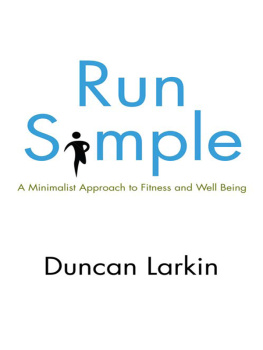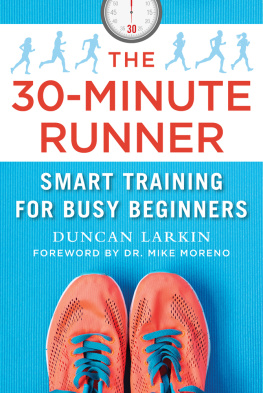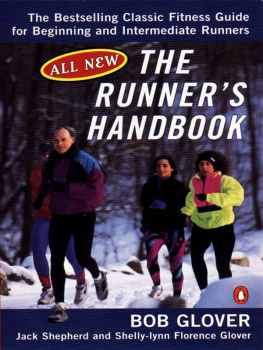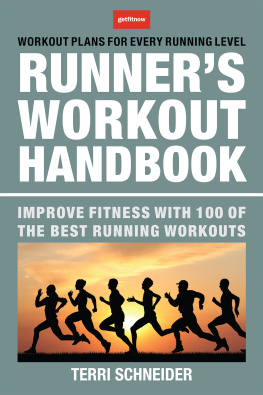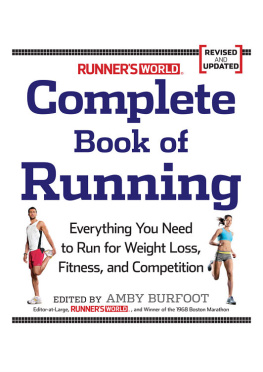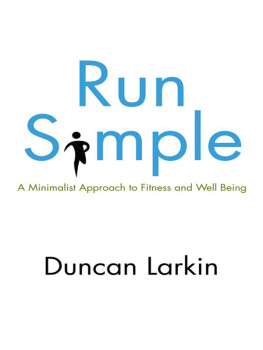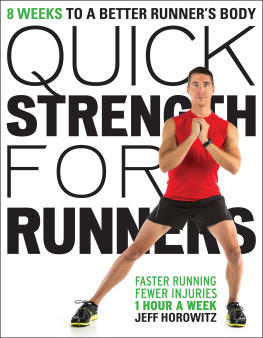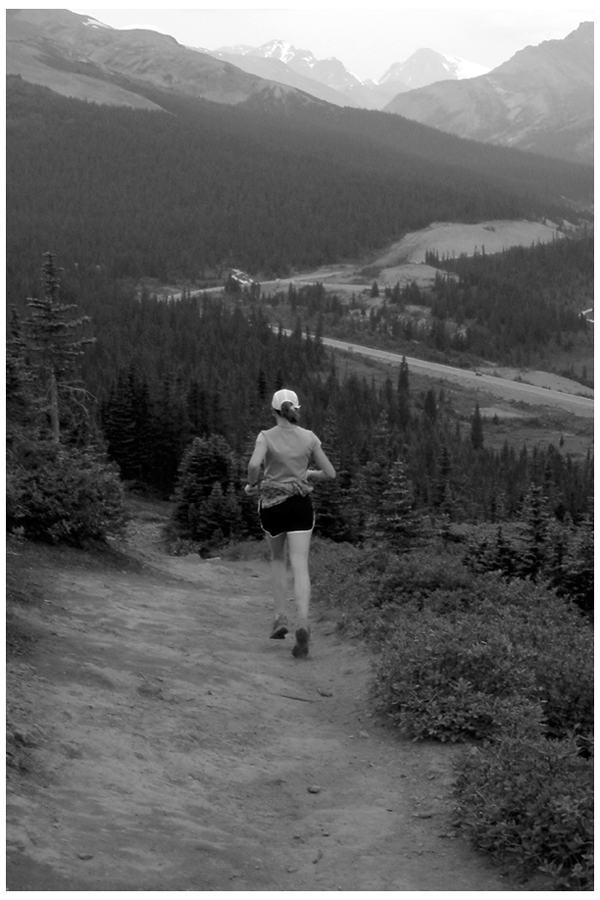This page is usually the place in a book where the author thanks certain people in his lifepeople who were instrumental in making the book possible. I would like to continue with this convention, but instead of just listing a series of names, I'd like to instead offer a bit more detail so that everyone but the person being thanked doesn't skip this part of the book.
To Erin Jackson: It's hard enough living with an obsessive runner; it's even harder living with one who writes books. Thank you for putting up with me.
To my parents, Don and Marilyn Larkin: Thank you for continuing to teach me how to love unconditionally.
To my agent, Rich Henshaw: Over the years, I've received hundreds of literary agency rejection letters, but one of them didn't come from you. Thank you for believing in me and in Run Simple.
To Bruce H. Franklin at Westholme: Thank you for your interest in this important concept and for ultimately deciding to publish this book.
To Mario Fraioli: Thank you for giving the manuscript a good run-through.
To Toby Tanser, Lauren Fleshman, Brad Hudson, and Anton Krupicka: Thank you for donating your valuable time and ideas to this book.
To Amy Schramm: Thank you for demonstrating the sample exercises.
And finally, to you, the loyal runner, that thoroughly dedicated person who heads out the door in the middle of a rainstorm to pound pavement: Thank you for picking up this book. I hope it gets you to change at least one thing about your running. If it does, I've succeeded and so will you.
one
Simply Running
ARE YOU A SATISFIED RUNNER? If you're reading this book, then there's a good chance you aren't, or you want more out of running. There's a reason you have picked it up and begun thumbing through it; you've made that valuable investment of your time and hard-earned money into running and you want to get something out of it.
You want to run faster; you want to feel better.
This probably isn't your first running book. I'll wager you've read plenty of how-to articles in various running magazines as well. And there's no doubt whatsoever that you're no stranger to searching for running tips on the Web. I'm quite sure you've been to a running bulletin board or two and that you've wandered around many a prerace expo in search of something (anything!) that will help you break that stubborn, 10-year-old 5K personal record.
You want to improve.
After all, what's the point of repetitive, day-in and day-out running if not to get better at itto find out how good you really can get at this sport?
Perhaps unbeknownst to you, after being exposed to this sport for some period of time, you've probably been conditioned to believe that serious runners can continuallyimprove only if they spend their hard-earned money on technological solutionsthings like expensive heart-rate monitors, sweat-wicking shirts, hydration backpacks, postrun recovery nostrums, electrolyte-coated jelly beans, bionic strength powder, socks designed by NASA, and a fancy GPS watch that gives you your pace down to the 100th decimal point.
An entire cottage industry has risen up around runners. Look at all those sales booths that get in your way as you try to pick up your race bib the day before your big marathon. There they are with their samples, telling you to wear this, to eat thisand most importantly, to buy this. If you have it in your hands, if you do as they say, if you read the instructions and pop in three AAA batteries, you'll run faster. Visa and MasterCard accepted; cash preferred, of course. These salespeople hawking quick fixes to complex problems are as old as snake oil itself.
But what no one bothers to say or write about running is that you don't need any of this to run faster. Really.
If you want to run faster, you have to realize that you only need a few things: your legs, lungs, heart, and a positive attitude. These are the things humans need to make them run faster. Without them, personal records aren't possible. Your legs propel you down the track. Your heart and lungs deliver that precious oxygenated blood to your muscles. A positive attitude contributes to that heroic kick needed to win the race or break that once-elusive personal record.
They matter most.
You have these things on you now. You don't need to buy them in a store; they aren't found by a search engine, so save your time and money. Put down that credit card. Close your browser window. Take a deep breath and prepare yourself to learn about a fresh, worry-free approach to your running.
The intention of this book isn't necessarily to demonize the running industry. After all, what's wrong with well-intentionedpeople (like this author) trying to make some money? The primary purpose of this book is to give you an alternative to the norm. It's to strike a balance. It's to ground yousomething every runner needs. I chose to title this book Run Simple because I believe many self-help running books are some variation of the title Run Complicated. There is something inherently Western about throwing money and technology at problems. In running, this means expecting these store-bought extras will help make up the difference in skill or ability that separates you from the person who crosses the finish line before you do. Sometimes it is as simple as looking in the wrong places for solutions to problems.
What's really missing, usually, is hard work. Those two words should be repeated in all-caps and shouted from the mountaintops: HARD WORK.
Hard workpainful miles run in freezing temperatures; arduous mile repeats in Mombasa-like dew-point air; grueling, lactic-acid-infusing hill repeatswill make you a better runner. That's right, your running improvement is not a mystery waiting to be solved by someone else. You won't necessarily run faster because you are wearing a GPS watch and know exactly how far and fast you're running all the time. You won't defeat your archrival thanks solely to that aerodynamic singlet at the next race. I'm skeptical about the efficacy of these things and believe that they compound a runner's worry. They can lead to fitness confusion or analysis paralysis. Your purchase of these nostrums and doohickeys will only help some entrepreneurial inventors somewhere.
Your bank account, not your times, will decrease.
Decreasing your finishing timesgetting from one point to another faster than you ever have beforethat's what I want to help you accomplish with this book, but I also want you to look at running differently; I want you to look at it as you've never looked at it before.
I hope this book helps you. I hope it becomes dog-eared. I hope you write in its margins. Keep it close by. Consult it often. Take it with you on race day and thumb through it while you wait for the race director to call you to the start line. When you feel compelled to buy a $150 pair of running shoes, when the slick ad promising the big personal record has you reaching for your wallet, when you seek to Web surf your way to a site that boasts rapid improvement, have this book ready by your side as a common-sense defense.

